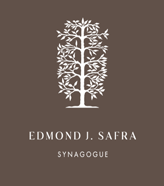Perashat Tessaveh 5776
Home > Rabbi's Weekly Message > Perashat Tessaveh 5776
Perashat Tessaveh 5776
Friday, February 19, 2016We generally look with reverence at how a person dresses and what he or she is wearing. Usually what they are wearing, tells us plenty about who they are.
Businesses and companies require their employees to wear a uniform that represents the company. Schools have compulsory uniforms for their students. A student may even be punished if he or she is not wearing the uniform. Different educational philosophies have arisen as to the positive or negative values of uniforms; how they affect the student, their individuality, uniformity or self-worth. No matter what side of this argument one finds themselves on, uniforms are either loved or hated. In sports, uniforms are a form of identification and loyalty. Fans wear the uniform of their favorite team. Great financial income accrues to the team via the selling of their uniforms and their paraphernalia.
The use of uniforms in schools, businesses, youth organizations and sports teams, serve two purposes. It serves to identify the person as member of the team or organization, or it serves to instill pride in the person wearing the uniform as a representative of that team or organization. It could bring praise to the team or organization, if the person wearing it acts properly, and conversely it could bring shame and scandal if the person wearing it behaves and acts inappropriately.
The Perasha this week, Tessaveh, is dedicated to describing, in a very meticulous way, the Priestly Garments; their material, the color, the style and the way they ought to be worn. How important are these garments that the Torah felt compelled to dedicate an entire Perasha for them?
The Perasha describes these Garments as being “לכבוד ולתפארת – Glory and Splendor”. The vestments were to be worn for the Glory of G-d, and as Splendor for the Kohen as the teacher of the nation and minister of the Mishkan, the Sanctuary. These garments were to distinguish the Kohen Gadol – High Priest and the Kohen Hedyot – the ordinary Kohen, while they are serving in the Sanctuary. All the Priestly Garments were to be made of materials that were the property of the nation and had been contributed by the people for the Temple service, thus symbolizing that the Kohanim were public servants and their representatives. Without the garments, the service could not be done. On the other hand, if anyone else, not a Kohen, wore those garments, that, would still not allow him to perform the service.
The individual gives the importance to the garment and not the reverse.
These vestments were to bring honor to the Kohanim, similar to the garb of Royalty. The vestments were for the Glory of G-d and as a Splendor to the Kohen, so that he would be revered by the people as the teacher of the nation. Glory accrues to the person because of his G-d given abilities, while splendor comes as a results of his own accomplishments. Therefore, we can say that the glory due to the Kohanim was a results of their appointment as ministers and the splendor would result from their own efforts as teachers.
For the last two thousands years, we did not have the privilege or joy to see that glory and splendor of the Kohanim wearing their vestments. We did not witness the spirituality that accompanied those vestments; the ceremonies, the excitement, the grandeur and majesty that the vestments gave to the Priesthood and that the Priesthood gave to the vestments.
How often do we look at the representatives of the Church, the Bishops, Cardinals and the Pope himself, and are awed by their vestments and by the majesty and grandeur that they impart? Then we realize that those garments have been copied and are in reality, based on the garments of the Kohanim. Our glory and splendor has been taken away. The unfortunate reality has been such, that we forgot completely that these garments belong to us, and they have been usurped and appropriated by them. The sprinkling of water and wine on their altars, the washing of hands and feet, as well as the incense, have all been taken from us; the entire glory of our Temple and the splendor of the Service of the Kohanim. But as we said above, “if anyone else, not a Kohen, wore those garments, that, would still not allow him to perform the service. The individual gives the importance to the garment and not the garment to the individual.” The splendor and glory of our Bet Hamikdash with the Kohanim, is not with us now, but certainly will be in the near future!
How often do we also see, people wearing attire reflecting certain dignity and respect, yet judged by their behavior, we realize how inappropriate is for that person to be wearing such attire. They bring shame and disgrace to the attire, their organization and what they represent. People wearing garb representing certain religious groups, who are found in places that they ought not be or acting and behaving in ways unbecoming of themselves and their group, can only bring shame and disgrace upon themselves, their garments and their people.
How careful we must be in reflecting what we represent, especially when we are wearing those garments that are meant to bring glory and splendor.
Let us hope and pray that we will have the privilege to see and experience the glory and splendor of the Kohanim wearing their vestments and serving in the Holy Temple in Jerusalem, Amen.
Dec 21 2025
Tebet 1 5786
